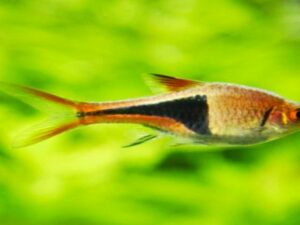Here, we will discuss how to get rid of algae in your fish tank. If you've noticed algae growing in your fish tank, don't panic! Algae is a common problem in tanks, and there are several things you can do to get rid of it.
First, it's essential to understand that there are different types of algae. The three most common types are green, brown, and red algae. Green algae are the most common type of algae in tanks, and it's also the easiest to get rid of. Brown and red algae are more difficult to remove, but it can be done with patience and persistence.
Table of Contents
13 Ways To Get Rid Of Algae
If you already have algae in your tank, don't worry! There are several things you can do to get rid of it.
- Change The Water: One of the best ways to get rid of algae is to change the water. Algae thrive in nutrient-rich water, so a water change will remove some of the nutrients that the algae need to grow.
- Limit Light: As we mentioned before, algae need light to grow. So, one of the best ways to get rid of algae is to limit the amount of light that hits your tank. If you have an aquarium with a hood, keep the hood closed. If your tank is sunny, move it to a shady spot.
- Remove Algae: Another way to remove algae is to remove it manually. Use a sponge or algae scraper to remove the algae from the glass, plants, and decorations. Be sure to clean everything the algae have touched to prevent it from spreading.
- Use Algae Eaters: If you have fish, you can use them to eat the algae in your tank. Several different types of fish eat algae, including plecos, otocinclus, and siamese flying foxes.
Also, check Bellus Angelfish Care: Appearance, Size, Lifespan, Diet & All
- Use Chemicals: If you can't get rid of the algae manually or with fish, you can use chemicals. There are several different algae-killing chemicals that you can buy at your local pet store. Follow the directions carefully and use the chemicals in a well-ventilated area.
- Prevent Future Algae Growth: Once you've gotten rid of the algae, it's important to prevent it from growing back. Be sure to clean your tank regularly and limit the amount of light that hits your tank. You may also want to consider using an algae-preventing chemical in your tank.
- Use A UV Sterilizer: A UV sterilizer can also help to prevent algae growth. This device emits ultraviolet light that kills algae.
- Change The Water: One of the best ways to prevent algae growth is to change the water regularly. Water changes will remove algae-causing nutrients from the water.
- Use A Filter: A filter can also help prevent algae growth. A properly-sized filter will remove algae-causing nutrients from the water.
- Don't Overfeed: Another way to prevent algae growth is not to overfeed your fish. When fish food breaks down, it releases phosphate and nitrate into the water. These substances can cause algae to grow.
- Test The Water: Regular testing will also help prevent algae growth. This will allow you to keep an eye on nitrate and phosphate levels in your tank. If these levels get too high, they can cause algae to grow.
- Use Aquarium Plants: Aquarium plants can also help prevent algae growth. Plants compete with algae for nutrients, so they can help to keep the algae in your tank under control.
- Reduce The Amount Of Nitrate And Phosphate In Your Tank: One of the best ways to prevent algae growth is to reduce the amount of nitrate and phosphate in your tank.
Types Of Algae
As we mentioned, there are three main types of algae: green, brown, and red.
Green Algae
The most common type of algae in tanks is green algae. It's a slimy substance that can grow on your tank's glass, plants, and decorations. Green algae are harmless to your fish and plants but can be unsightly.
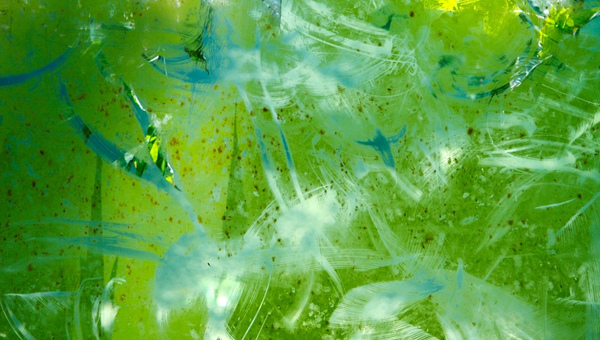
Brown Algae
Brown algae are less common than green algae but can be more difficult to remove. Brown algae tend to grow in tanks that don't have enough light. It's a brownish-black substance that can coat the glass, plants, and decorations in your tank.
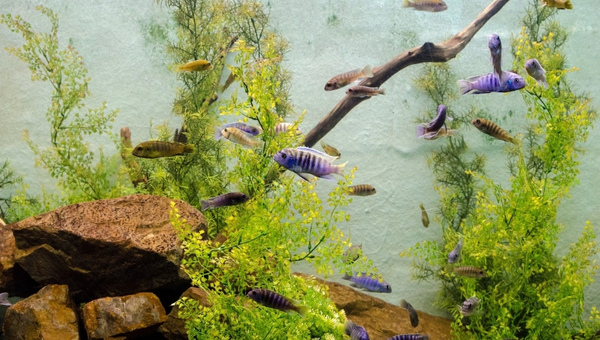
Red Algae
Red algae are the least common algae but can be the most difficult to remove. Red algae tend to grow in tanks that have too much light. It's a red or pinkish substance that can grow on your tank's glass, plants, and decorations.
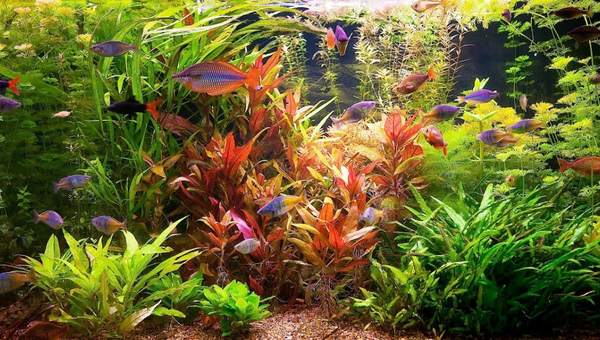
Diatom Algae
Diatom algae is a type of algae that can grow in both fresh and saltwater tanks. It's a silica-based algae, so it can be difficult to remove. Diatom algae are usually yellow or brown and can coat the glass, plants, and decorations in your tank.
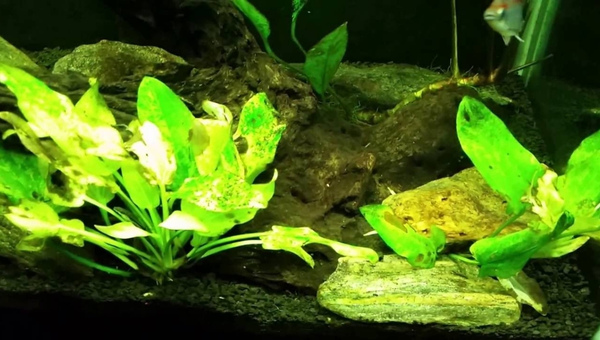
Blue Green Algae
Blue-green algae is a type of bacteria, not algae. It's a slimy substance that can grow on your tank's glass, plants, and decorations. Blue-green algae are harmful to your fish and plants and can be difficult to remove.
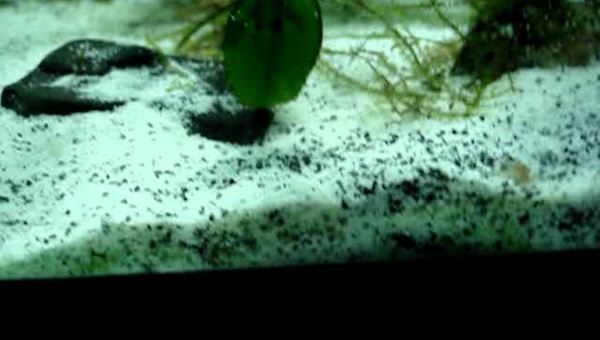
Check Otocinclus Catfish Care Guide: Appearance, Lifespan, Food & Diet, Breeding & All
Causes Of Algae Growth
Several things can cause algae to grow in your tank.
Too Much Light
One of the most common causes of algae is too much light. Algae need light to grow, so if your tank is in a sunny spot or you have the lights on for extended periods of time, it can cause algae to grow.
Too Much Nitrate
Nitrate is a substance that's released when fish waste breaks down. Too much nitrate in your tank can cause algae to grow.
Too Much Phosphate
Phosphate is another substance that's released when fish waste breaks down. Too much phosphate in your tank can also cause algae to grow.
Poor Water Quality
Poor water quality can also cause algae to grow. If your tank is dirty or the water is not properly filtered, it can create an environment conducive to algae growth.
Overfeeding
Overfeeding your fish can also cause algae to grow. When fish food breaks down, it releases phosphate and nitrate into the water. These substances can cause algae to grow.
Also, check Butterfly Betta Care Guide: Appearance, food & Diet, Breeding & All
Nutrients
Another cause of algae is excess nutrients in the water. Fish waste and uneaten food can contribute to algae growth.
Incorrect pH Levels
Another factor that can cause algae to grow is a high pH level. Algae prefer alkaline water, so if your tank has a high pH, algae will likely grow.
Waste
Another cause of algae is waste in the tank. Fish waste and uneaten food can contribute to algae growth.
Temperature
Another factor that can cause algae to grow is a high water temperature. Algae prefer warm water, so if your tank is too warm, algae will likely grow.
Lack Of Circulation
Another factor that can cause algae to grow is a lack of circulation. Algae need oxygen to grow, so if your tank has poor circulation, it can create an environment conducive to algae growth.
Also, check Cardinal Sulawesi Shrimp 101: Care Guide & Breeding Guide
Ways To Prevent Algae Growth
The best way to get rid of algae is to prevent it from growing in the first place.
Here are a few things you can do to prevent algae growth:
- Clean Tank: One of the best ways to prevent algae growth is to keep your tank clean. Regular water changes and vacuuming the gravel will remove algae-causing nutrients from the water.
- Limit Light: Another way to prevent algae growth is to limit the amount of light that hits your tank. If you have an aquarium with a hood, keep the hood closed. If your tank is sunny, move it to a shady spot.
- Remove Algae: Another way to prevent algae growth is to remove it as soon as you see it. Use a sponge or algae scraper to remove the algae from the glass, plants, and decorations. Be sure to clean everything the algae have touched to prevent it from spreading.
- Use Algae-Eating Fish: Another way to prevent algae growth is algae-eating fish. These fish will eat the algae in your tank, keeping it under control.
- Use Plants: Using plants in your tank can also help to prevent algae growth. Plants compete with algae for nutrients, so they can help to keep the algae under control.
You may also check Ultimate Dragon Goby 101: Care, Appearance, Food, Habitat & All
- Use A UV Sterilizer: A UV sterilizer can also help to prevent algae growth. This device emits ultraviolet light that kills algae.
- Change The Water: One of the best ways to prevent algae growth is to change the water regularly. Water changes will remove algae-causing nutrients from the water.
- Use A Filter: A filter can also help prevent algae growth. A properly-sized filter will remove algae-causing nutrients from the water.
- Don't Overfeed: Another way to prevent algae growth is not to overfeed your fish. When fish food breaks down, it releases phosphate and nitrate into the water. These substances can cause algae to grow.
- Test The Water: Regular testing will also help prevent algae growth. This will allow you to monitor nitrate and phosphate levels in your tank. If these levels get too high, they can cause algae to grow.
Also, check Tomini Tang Fish Care Guide: Appearance, Breeding & All
Check Pipefish 101:Care, Appearance, Diet, Breeding, Lifespan & All
How To Use Algaecides Correctly
If you've decided to use an algaecide to get rid of algae, there are a few things you need to know. First, you need to choose the right algaecide. There are several different types of algaecides on the market, so be sure to choose one that is safe for your fish and plants.
Second, you need to follow the directions carefully. Algaecides are chemicals, so you need to be careful when using them. Be sure to use the algaecide in a well-ventilated area and follow the directions carefully.
Also, check Rosy Barb 101: Care, Species, Appearance, Tankmates, Habitat & All
Finally, you need to take precautions to prevent algae from growing back. Be sure to clean your tank regularly and limit the amount of light that hits your tank. You may also want to consider using an algae-preventing chemical in your tank.
Also, check Clown Loach Care: Appearance, Tank Mates, Lifespan, Breeding & All
Conclusion
Prevention is the best way to get rid of algae, but if you already have algae, there are several things you can do to get rid of it. Be sure to change the water, limit the amount of light, and remove the algae manually. You can also use fish to eat the algae or use chemicals to kill it.
Follow the directions carefully and take precautions to prevent the algae from growing back.



